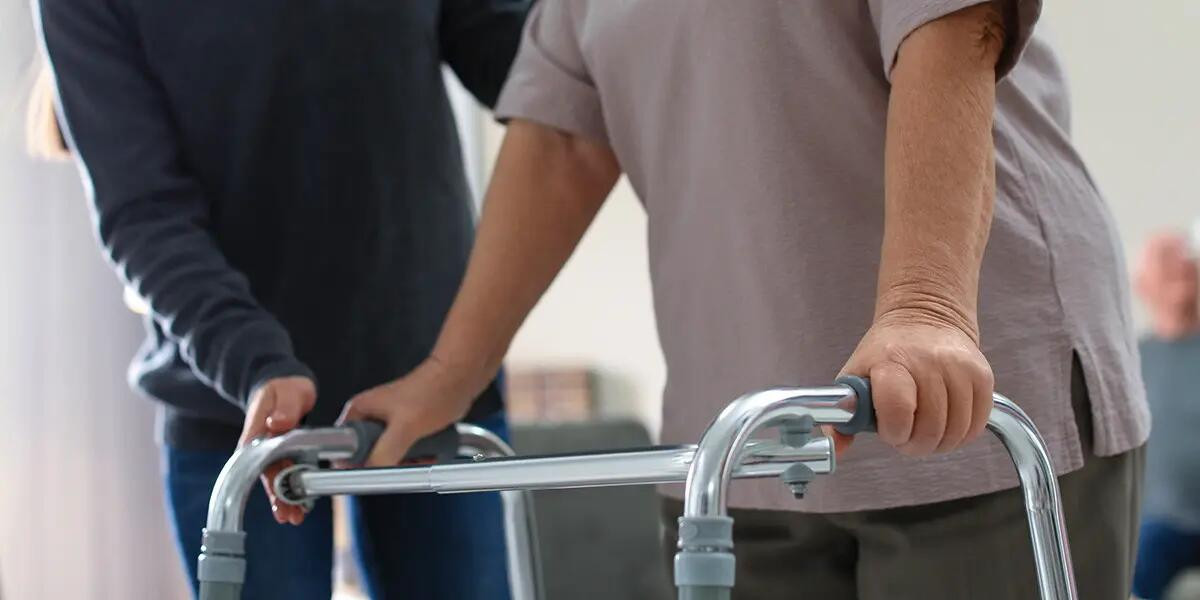Falls & Dementia Care: An Update for Falls Prevention Awareness Week

Every year, about 36 million older adults suffer a fall, and 3 million have to visit emergency rooms due to a fall, according to CDC data. In honor of Falls Prevention Awareness Week (September 18-24, 2022), here is a round-up of facts worth knowing about falls among older adults and nursing home residents.
Falls diminish quality of life
Falls—and even fear of falling—take a heavy toll on well-being, according to the National Council on Aging. Falls reduce quality of life and “can result in further physical decline, depression, social isolation, and feelings of helplessness,” says the Council. What’s more, individuals who continually fear falling may cut back on activities or avoid social engagements in an effort to stay safe.
Falls – risk factors
Some of the factors that can increase the risk of a fall include:
- Vestibular disorder/poor balance
- Gait problems
- Muscle weakness
- Functional status, e.g., not being able to rise from a chair
- Use of a mobility aid (e.g., cane, walker)
- Attached equipment (e.g., IV, oxygen)
- Visual impairment
- Poor familiarity with the environment
- Postural hypotension
- Certain medications, including benzodiazepines, antidepressants, antipsychotic agents, antihypertensive agents, anti-arrhythmic agents, and opioid analgesics (Shuto et al.)
- A history of past falls
- Environmental hazards, e.g., lack of grab bars, slippery surfaces, poor lighting
- Unsafe footwear.
Falls are more common in dementia
Patients with dementia are at double the risk of falls, according to Zhang et al. In fact, almost two-thirds of people with dementia experience a fall each year, they explain. Those with dementia share many risk factors with the broader population—"such as fall history, environmental hazards, motor impairments, and visual impairments,” say the authors.
However, they also present some unique risk factors related to deficits in sensory integration, attention, cognitive flexibility, judgement, and inhibitory control. Psychological factors such as depression, anxiety, and behavioral attributes contribute to risk as well, explain Zhang et al. Among patients with dementia, verbally disruptive and attention-seeking behavior, as well as high scores on anxiety or impulsivity, were each associated with an increased risks of falls, say Fernando et al.
In early stages of dementia, simply the fear of falling (linked to anxiety) is a common risk, according to Zhang et al.; this fear can increase the risk of actual falls in the cognitively impaired population.
In the neurobehavioral long-term care setting, it’s also important to understand that “medications with central nervous system effects—specifically, antipsychotics, anxiolytics, hypnotics, sedatives, and antidepressants—were uniformly associated with an increased fall risk,” according to Fernando et al.
In fact, polypharmacy itself is a risk factor, according to Shuto et al.
Risk assessment & falls prevention resources
Recognizing risks is a good first step towards preventing falls. Many risk factors are unique to each individual. The National Council on Aging offers a Falls Free Checkup, which you can use as a health professional to better understand your patient’s risk factors. The checkup provides specific, customized risk prevention strategies based on responses.
Conducting a falls prevention assessment and managing a falls prevention program are critical aspects of patient safety in a nursing home. The Agency for Healthcare Research and Quality offers comprehensive tools for assessment, creating a plan, investigating falls, and managing communications. You can access the materials at the On-Time Falls Prevention page.
For tips, additional professional resources, and family education materials, visit the CDC STEADI pages.
Neurobehavioral support matters
Understanding each patient’s neurological status, assessing cognitive function, reducing polypharmacy, and providing psychosocial support are all areas where the clinical team at GuideStar Eldercare can support you in assessing residents and optimizing falls prevention to advance quality of life.
Many factors weave together to create the experience of safety, functionality, and dignity that every long-term care resident deserves. For those who fear falling and those who face multi-factored risks, we advocate for falls prevention in nursing homes—this month and beyond.
